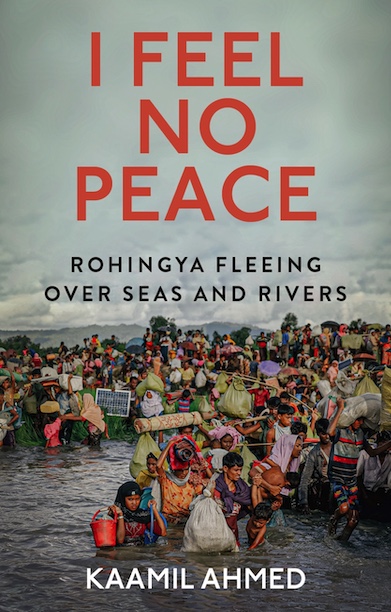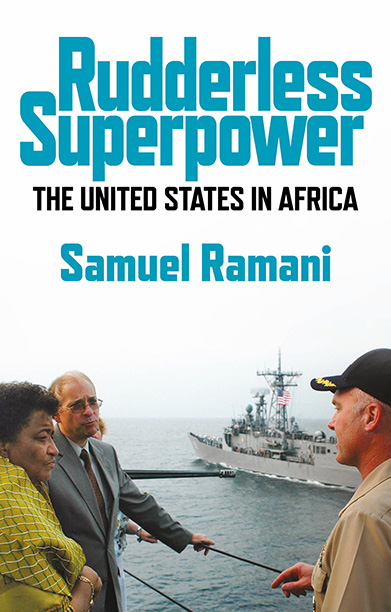Streets Without Joy
A Political History of Sanctuary and War, 1959–2009
Blending historical research with policy analysis, Innes investigates how the concept of sanctuary shaped Washington’s own understanding of how warfare should be conducted, against conventional and unconventional opponents alike.
Description
America’s wars after the 9/11 attacks were marked by a political obsession with terrorist ‘sanctuaries’ and ‘safe havens’. From mountain redoubts in Afghanistan to the deserts of Iraq, Washington’s policy-makers maintained an unwavering focus on finding and destroying the refuges, bases and citadels of modern guerrilla movements, and holding their sponsors to account.
This was a preoccupation embedded in nearly every official speech and document of the time, a corpus of material that offered a new logic for thinking about the world. As an exercise in political communication, it was a spectacular success. From 2001 to 2009, President George W. Bush and his closest advisors set terms of reference that cascaded down from the White House, through government and into the hearts and minds of Americans. ‘Sanctuary’ was the red thread running through all of it, permeating the decisions and discourses of the day.
Where did this obsession come from? How did it become such an important feature of American political life? In this new political history, Michael A. Innes explores precedents, from Saigon to Baghdad, and traces how decision-makers and their advisors used ideas of sanctuary to redefine American foreign policy, national security, and enemies real and imagined.
Reviews
‘Soldier-scholar Michael Innes’ Streets Without Joy is an especially timely and important contribution to the literature. His first-hand experience coupled with his grasp and analysis of the historical salience of this issue as well as its relevance to contemporary conflicts, is as original as it is insightful.’ — Bruce Hoffman, Professor at Georgetown University and author of Inside Terrorism
‘In Streets Without Joy, Michael Innes combines applied history and theory to explore how the dominant discourses of rebel “sanctuaries” and terrorist “safe havens” shaped the way in which the US waged war in the 9/11 era. The writing is compelling, and the author’s constant attention to methodology and sense of time and place are deeply impressive. Not only is this intellectually ambitious book a fitting tribute to Bernard Fall, whose life and work inspired the author’s own journey from practitioner to scholar; it is a singular achievement in its own right, one that demands the attention of every scholar of modern warfare.’ — Joe Maiolo, Professor of International History, King’s College London
‘Innes’ important book explores an understudied element of American foreign policy discourse. The author illustrates that the post-9/11 rhetoric about enemy sanctuaries in Afghanistan and Iraq was far from new; instead it drew on a long history that was both deeply embedded in and had a significant impact on policymaking.’ — Andrew Priest, Department of History, University of Essex
‘Extremely readable, lucidly stated and focused, Innes’ analysis is enhanced by a sharp eye for concrete situations and an ear for the voices of people he has met up with in the course of his career. This book not only traces the history of sanctuaries since the Second World War it also offers a penetrating analysis of our own world of frontlines, “back alleys” and “safe” and “not-so-safe” spaces that defy sovereign jurisdiction.’ — Christopher Coker, Director of LSE IDEAS
‘Michael Innes provides an authoritative investigation into the origins, multiple meanings, use and abuse of America´s post-9/11 sanctuary discourse. Original and compelling, this book provokes numerous trains of thought that will serve to fertilise many new fields of War on Terrorism scholarship’ — Jeffrey Michaels, Senior Fellow, Barcelona Institute of International Studies
‘In the aftermath of 9/11, the US military and CIA launched an unprecedented, 20 year “sanctuary denial” campaign that saw hundreds of thousands of troops and operatives deployed across the globe. But, even as CIA drone fleets wiped out Al Qaeda and Special Forces hunted ISIS insurgents in the “ungoverned spaces” of distant deserts, islands, and mountains, it became apparent to political scientist Michael Innes that the Pentagon had not begun to truly understand the underlying basis for America’s entire war and counter-terrorism effort; the concept of sanctuary. It is with the aim of chronicling, for the first time, the fundamental notion of sanctuary in America’s wars that Innes takes readers on a truly ground-breaking and riveting journey into the history of this concept that launched the superpower’s longest conflict. This story begins unexpectedly in the jungles of Vietnam in the 1960s and extends all the way to the hallways of power in Trump’s Washington D.C.’ — Brian Glyn Williams. Author of Counter Jihad and former CIA Counter-Terrorism Center analyst
‘A timely, policy-relevant work that performs a tremendous service by arguing that rhetoric matters when it comes to war. In a series of insightful case studies, Innes perceptively examines how policymakers and military leaders define “terrorist sanctuaries” and “safe havens,” often in ways that undermine their own national security objectives.’ — Gregory A. Daddis, USS Midway Chair in Modern U.S. Military History, San Diego State University
‘Despite their critical importance in armed conflicts, wartime sanctuaries rarely receive the scholarly scrutiny the topic deserves. In this highly readable book, Innes connects the dots with his fine analysis of half a century of US wartime sanctuary discourses, offering much new insight into a highly policy-relevant theme.’ — Brynjar Lia, Professor of Middle East Studies, University of Oslo
‘Michael Innes’ book on sanctuaries is an indispensable guide to an issue that has been central to the wars and security debates of the past generation – and will continue to be in future.’ — Anatol Lieven, author of Pakistan: A Hard Country.
‘Michael Innes perceptively illuminates a construct that shaped the last twenty years of war, with tragic implications for millions of people, but which few have ever heard of. If you want to understand how the War on Terror went so awry, read this book.’ — David Kilcullen, author of The Dragons and the Snakes
Author(s)
Michael A.K.G. Innes (PhD, SOAS) is a Visiting Senior Research Fellow in the Dept. of War Studies, King's College London, and Director of the Conflict Records Unit in the department's Sir Michael Howard Centre for the History of War. He is also an associate of LSE IDEAS, the foreign policy think tank of the London School of Economics and Political Science, and of the Department of Politics at the University of London's School of Oriental and African Studies. As a scholar and practitioner, he has covered conflicts across Africa, Asia and the Middle East for over twenty years. In 2003–9, he was a civilian advisor with NATO, working from headquarters in Europe and the Balkans and on operations in Afghanistan and Bosnia-Herzegovina.






